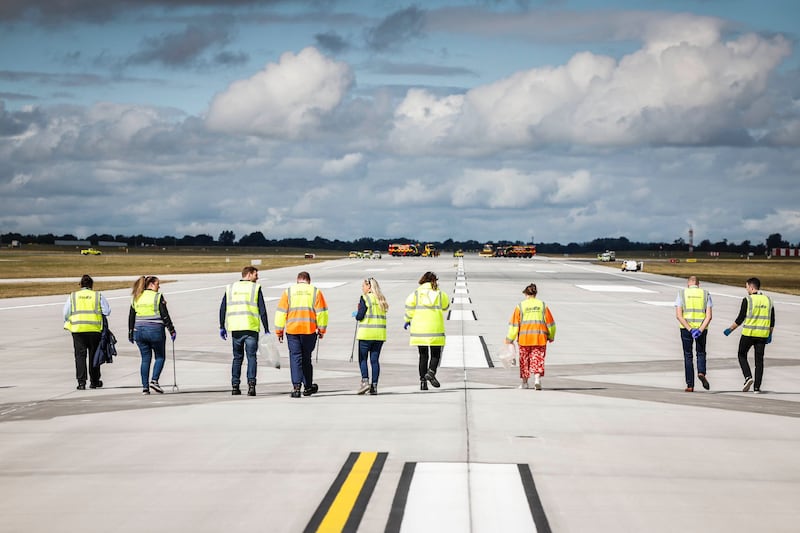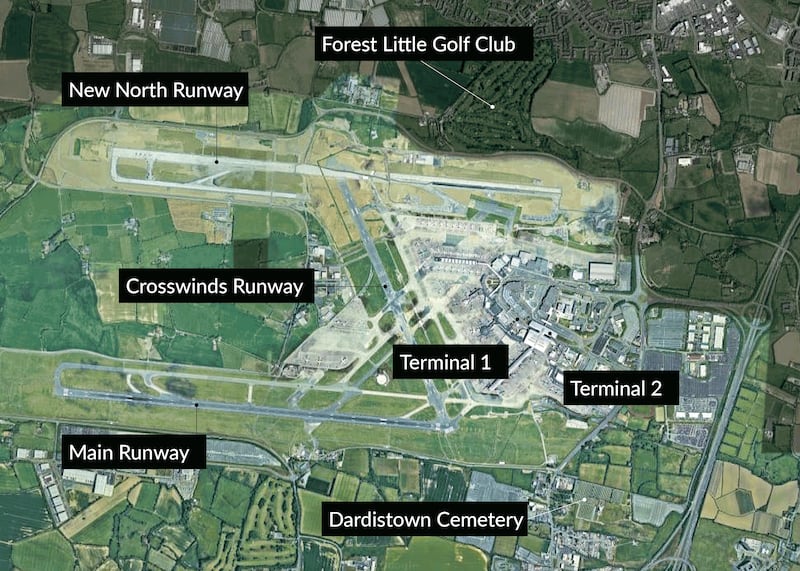The inaugural flight from Dublin Airport’s new north runway took off on Wednesday. The FR1964 Ryanair flight to Eindhoven departed just after noon from the new €321 million runway and was live streamed by Dublin Airport.
The runway is 3.1km in length, comprising of 300,000sqm of runway, serviced by 6km of new roads and 2,000 taxi lights for aircraft.
It is hoped the runway will result in a 31 per cent gain in connectivity for Dublin Airport by 2034, making it an important hub for transatlantic travel.

Minister of State at the Department of Transport Hildegarde Naughton said the new runway would provide “much-needed capacity” and will enable Dublin Airport to “rebuild and enhance connectivity to our island”.
An ‘arch-manipulator’ who isolated his ‘trophy’ wife: The full story of the Richard Satchwell murder trial
Deadly Silence: The compelling and harrowing story on the killing of Clodagh Hawe and her children
Cliff Taylor: Ireland cannot base its economic strategy on the ‘Taco’ theory – Trump Always Chickens Out
What on earth were China’s women runners on back in the 1990s?
“The new runway is a crucial piece of infrastructure which will enable Dublin Airport to expand and provide the necessary capacity to connect key existing and emerging global markets,” she said.
DAA chairman Basil Geoghegan said the runway underpins its position as “a leading European airport and a key gateway to North America”.
“Following the COVID pandemic, DAA has a renewed ambition for Dublin Airport and its users. We are steadfast in our ambition to grow Dublin Airport sustainably and to be a standard bearer for quality service,” he said.
[ Dublin Airport operator faces €6m bill to insulate homes from air traffic noiseOpens in new window ]
[ New study aims to limit damage by hares to planes landing at Dublin AirportOpens in new window ]
“Following on from the North Runway development, we will progress at pace our planned capital investment programme in a refurbished terminal, new piers, gates, stands and transfer facilities that will ensure a compelling service and lasting legacy for future generations of air travellers in and out of Ireland.”
Dublin Chamber said the runway was “a vital piece of infrastructure” that will support the growth of the Dublin region and Ireland through increased international connectivity.
“The expansion of Ireland’s aviation capacity will play an important role in Ireland’s economic recovery,” its chief executive Mary Rose Burke said.
“International connectivity remains crucial to Ireland’s overall competitiveness as an island economy, particularly in hard-hit sectors such as tourism and hospitality and among Irish SMEs with ambitions for international growth.

“Amid Covid recovery, the invasion of Ukraine, Brexit and resulting supply chain disruption, Ireland must diversify its markets, restore connectivity, and establish new trade routes to support economic growth and recovery. The delivery of the North Runway is crucial to enabling this international expansion.”
The project was beset with planning difficulties since the then Dublin Airport Authority (DAA) got planning permission in 2007 at the height of the Celtic Tiger. It was to be built on a landbank set aside in the 1960s in the event of such a development being needed.
The north runway was first proposed in 2004 in anticipation that it would cater for the continuing boom in air traffic. However, the economic crash put the project on hold.
Originally the planning permission was for flights to run between 7am and 11pm, but that was amended to between 6am and midnight. More than 1,200 submissions were made to the Aircraft Noise Competent Authority (ANCA) about the project, with most objecting to the changes.
Some 300 houses affected by the new runway will be eligible for a €20,000 insulation grant to block out the noise.













